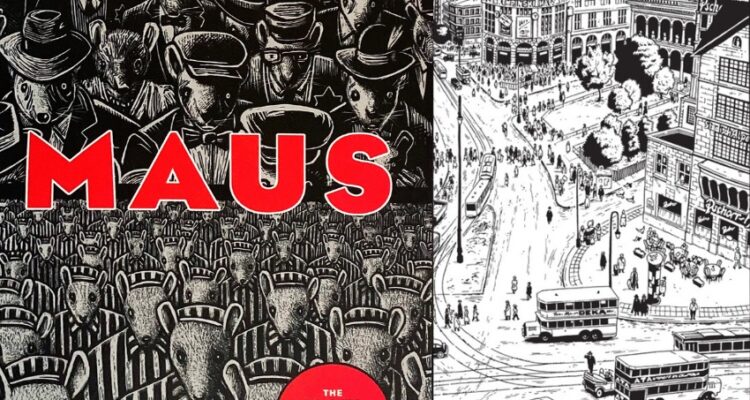The Complete Maus
By Art Spiegelman
Penguin Books, 2003Berlin
By Jason Lutes
Drawn & Quarterly, 2020
Maus is a graphic novel that tells the story of Vladek Spiegelman, a Jewish survivor of the Holocaust. Serialised from 1980 until 1991, it won the Pulitzer Prize, breaking common perceptions of comics to reach new audiences receptive to its serious and political themes.
Creator Art Spiegelman, Vladek’s son, frames the story through his difficult relationship with this aging father and his recounting of painful memories. Jews are drawn as mice while Germans appear as cats, subverting a Disney comics tradition. The first three-page version of Maus appeared in a 1972 underground comic book anthology alongside works by counter-culture cartoonist Robert Crumb.
The story starts in mid-1930’s Sosnowiec, Poland, where Vladek is drafted into the army just before the Nazi invasion. He is captured and becomes a prisoner of war but manages to escape and reunite with his young family. They go into hiding while Sosnowiec is turned into a Ghetto. Eventually they are found and deported to the unimaginable horror of the Auschwitz concentration camp.
There, Vladek and his wife survive the war only through enormous tenacity and luck.
Spiegelman’s black and white drawings are expressionistic and high contrast, without excessive detail. Each page has plenty of text but the pacing keeps the story flowing.
Read the article by Andrew Chuter in Green Left.

